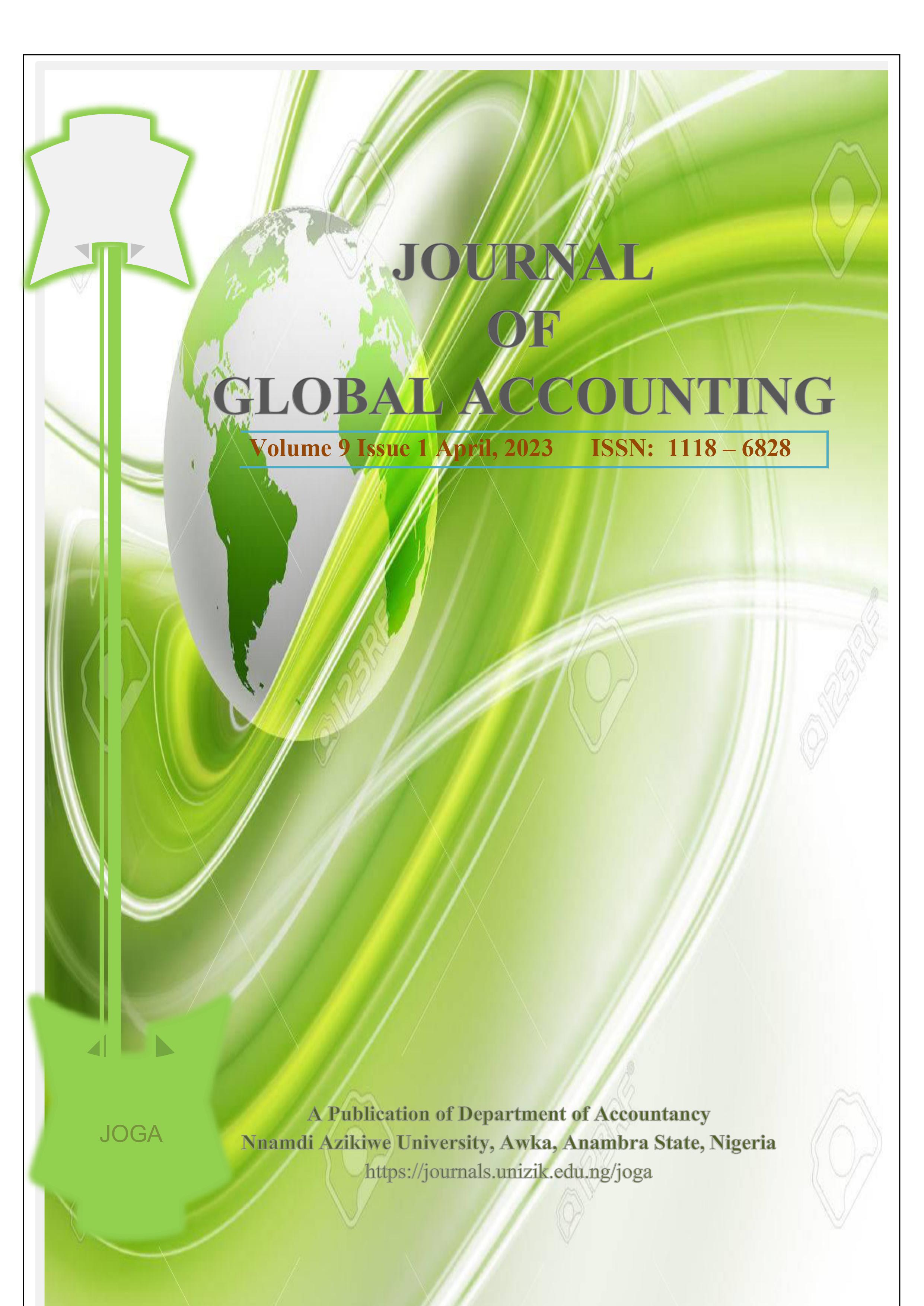CORPORATE SOCIAL RESPONSIBILITY AND TAX AVOIDANCE: EMPIRICAL EVIDENCE FROM QUOTED CONSUMER GOODS FIRMS
Keywords:
Book Tax Difference, Corporate Social Responsibility, Effective Tax Rate, Panel Estimated Generalised Least SquaresAbstract
The study examined the effect of corporate social responsibility disclosure on the tax avoidance of listed manufacturing firms on the Nigerian Exchange Group (NGX). The specific objectives of the study are to: examine the effect of social responsibility disclosure on the effective tax rate of quoted manufacturing firms; and, determine the effect of social responsibility disclosure on the book-tax difference of quoted manufacturing firms. The study adopted the ex post facto research design. Out of the population of 72 manufacturing firms, using the judgmental sampling method, twenty-one (21) firms were selected from the Nigerian Exchange Group (NGX). The data used were secondary and were drawn from 2011 to 2019. The data used were sourced from the firm’s annual report, the Nigerian Exchange Group fact book and the Internet. The data collected were analysed using both descriptive and inferential statistical techniques. The hypotheses were analysed using multiple regression; specifically, the Panel Estimated Generalised Least Squares (EGLS) technique. The results showed a significant effect of social responsibility disclosure on the effective tax rate; and, no significant effect of social responsibility disclosure on the book-tax difference. Based on these, the study recommends among others that managers develop models that factor in CSR externalities into share price valuation; and, (potential) investors should pay crucial attention to the CSR stance of managers in publicly listed companies as this may be indicative of the tax avoidance behaviour of the manager and signal several reputational risks in the future.
Additional Files
Published
Issue
Section
License
Copyright (c) 2023 JOGAArticles submitted to JOGA should not have been published or are currently under review by another Journal. Kindly see the guide for the preparation of the manuscript for details. Successful submission of articles by author(s) for publication clearly implies that the work is not an infringement of any existing copyright warranty as JOGA reserves the right to be indemnified by the author(s) where any breach of such warranty is proven. For ease of dissemination and to ensure proper policing of use, papers and contributions become the legal copyright of JOGA once published unless otherwise agreed.
Permission clearance should be obtained by the author(s) where applicable for the use of any content of interest not originally created by them. This must be done before the submission of the article to JOGA. Failure to do so may lead to a lengthy delay in publication, as JOGA is unable to publish any article which has permissions pending. Thus, the rights JOGA requires are:
- Non-exclusive right to reproduce the material in the article or book chapters.
- Print and electronic rights.
- To use the material for the life of the work (for instance, there should be no time restrictions on the re-use of material).
Where tables, figures or excerpts of more than 250 words are reproduced from another source, it is expected that:
- Author(s) should obtain the necessary written permission in advance from any third-party owner of the copyright for the use in print and electronic formats of any of their text, illustrations, graphics, or other material in their manuscript. Permission must also be cleared for any minor adaptations of any work not originally created by the author(s). The author (s) should not assume that any content freely available on the web is free to use.
- Where the author adapts a significant number of any material, the author(s) must inform the copyright holder of the original work.
- Author obtains any proof of consent statements
- The author must acknowledge figure(s) and content adopted or adapted in work utilizing source(s) and further capture them in the list of references.

